Review: 2009 Acura RDX
Some vehicles are doomed from the start. Take the Acura RDX: a not-inexpensive CUV with aesthetically challenging looks nestling amongst Honda’s “Huh?” brand. The RDX seems carefully designed to appeal to the few, the proud, the pistonheads. You know: enthusiasts who absolutely must have a willing engine, a chassis that’s a suitable dance partner and the elevated driving position of SUV—all at a price that’s significantly higher than more sensible (if dull) alternatives made by brands whose street cred didn’t die with the Integra. You see how that doesn’t work?
The RDX shares design cues with every other Acura, done in bizarro-land supersized fashion. Like Toyota’s not-a-RX Venza, Acura’s not-a-CR-V tries hard avoid the whole chubby, tall station wagon thing. And fails. The RDX’s front is this awkward beastette’s best viewing angle, especially when compared to the hideous snow shovel prow blighting its brand brethren. At the other end, the RDX’s unnecessarily projecting rear bumper gives the Nissan Quest a run for its money in the “Saggy Bottom of the Year” award. It’s the sort of ugly that makes Subaru owners stand just a little taller.
The RDX’s interior sports strangely rubbery leather on most of the interior surfaces, with shiny faux-metal (or faux-shiny metal, hard to tell which) sprinkled about. A disgustingly plastic steering wheel that looks like it was lifted straight off a Honda Accord (but wasn’t) does the CUV’s upmarket aspirations no favors. Compared to standard brands, it’s a cut above. Compared to luxury marques, it’s the cruelest cut of all. The rear seats and cargo space are small for one so large. The trunk’s odd shape puts the “ewww” in “utility.”
As for luxury features, Acura abides by a strict don’t ask, don’t give policy. The technology package gets you the sort of stuff other luxury players have done for years, and there are no features to set it apart from any other maker. The voice recognition is a nice trick, especially since trying to find the right button to change anything will drive you insane. And like all Acuras, the RDX has impeccable safety ratings.
The RDX’s raison d’être—at least for those “in the know”—lies under the CUV’s hood. Honda put a turbocharged 2.3-liter four-banger therein. It’s everything you ever wanted to drive . . . in any other chassis. Push the RDX’s go-pedal and the mill sings like a fine Italian tenor, gracefully swooping its way through the rev range. Tip-in and acceleration are tightly regulated and perfectly balanced. You don’t feel like you’re driving a two-ton vehicle; the car feels a lot faster than it is.
The RDX sits on a bespoke unitized body; so it’s not so big, it’s just tall (that’s all). With independent McPhersons up front and a multi-link out back, the RDX handles like a Honda sedan through the corners. Relatively small 18″ wheels help the ride quality; the all-season shoes do not. Net: a bit of a rough ride around town. Net net: there’s a disconnect between luxury interior and pavement crashing, but Acura probably reckons the RDX’s sprightliness and handling prowess justify the compromise.
So explain this glaring omission from the sports-sedan-on-stilts gestalt: a manual transmission. The RDX’s gearbox does a fine job of picking its shift points, so you won’t miss rowing the boat too much—unless you’re one of those few people who knows how to drive a manual transmission. The RDX’s automatic can be manually shifted, but it’s joyless and quickly abandoned. In compensation, the RDX’s shift knob fits in your hand perfectly, as if reassuring pistonheads that it’s not that bad. But it is.
But wait! There’s less! I mean, more. All that power and weight yields punishing gas mileage. While the RDX is EPA rated at 17/22 mpg, user-reported mileage is far lower, and does not improve much after break-in. Not that I blame the users; I’d probably drive the RDX like I stole it too. Otherwise, what’s the point? And why not? Gas is (comparatively) cheap right now, and I like warm summers.
Back in October, Acura dealers couldn’t give the RDX away; you could buy a brand new example with all the trimmings for about $30K. And no one is buying now, either. Economic uncertainty, the prospect of skyrocketing energy costs, and a lack of overall value conspire heavily against this heavyweight.
Few cars leave me with such mixed feelings. The RDX’s engine and handling are the best you’re going to get short of the best you can get from the SUV set, but the brand’s invisibility, the CUV’s lack of practicality and efficiency, and the depreciation all steer you in a different direction. ANY different direction.
What I want is the RDX’s engine and AWD system in a 3,200lb car, not a 4,000lb tank. God only knows why Honda refuses to give us a properly turbocharged Integra replacement and hands us this instead. Wrong answer.
I'm a computer security geek raised in Nebraska and recently transplanted to Atlanta. I like me some cars, got into car geekery a few years ago and haven't looked back since. I also volunteer at a local ferret shelter and participate in various charity and fund-raising events related to that.
More by Megan Benoit
Latest Car Reviews
Read moreLatest Product Reviews
Read moreRecent Comments
- Lou_BC Blows me away that the cars pictured are just 2 door vehicles. How much space do you need to fully open them?
- Daniel J Isn't this sort of a bait and switch? I mean, many of these auto plants went to the south due to the lack of unions. I'd also be curious as how, at least in my own state, unions would work since the state is a right to work state, meaning employees can still work without being apart of the union.
- EBFlex No they shouldn’t. It would be signing their death warrant. The UAW is steadfast in moving as much production out of this country as possible
- Groza George The South is one of the few places in the U.S. where we still build cars. Unionizing Southern factories will speed up the move to Mexico.
- FreedMike I'd say that question is up to the southern auto workers. If I were in their shoes, I probably wouldn't if the wages/benefits were at at some kind of parity with unionized shops. But let's be clear here: the only thing keeping those wages/benefits at par IS the threat of unionization.





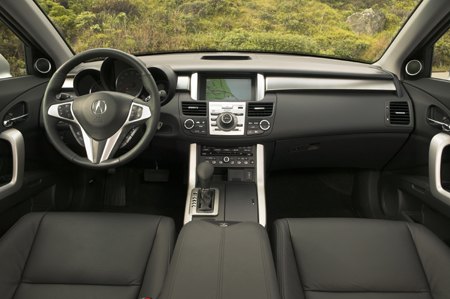



















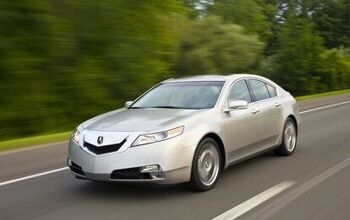
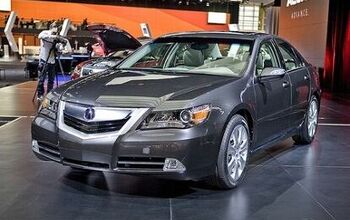
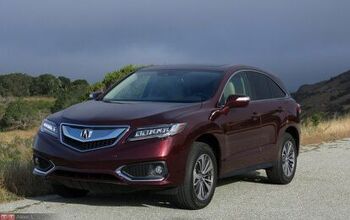
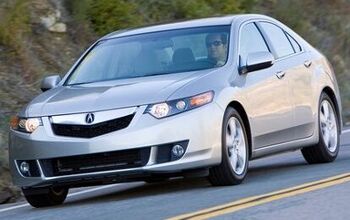










Comments
Join the conversation
The RDX tries to squeeze in between Santa Fe and Subaru, and fails. It's a CUV-poseur. Where is the utility in a latte-sipping turbo four that can only pull 1500 pounds? Come on Honda. This powertrain belongs in a hot hatchback. Remember those? As for the RDX, give it a small six - or possibly a diesel four - and the ability to pull my 2000 pound camper.
So, I test drove one of these (used) a few weeks ago. I am neutral on the styling and was pretty neutral about the interior. I'm 6'4" and I thought the back seat was acceptable. In particular, it is noticeably higher off the floor than in either the TL or TSX of the same ('08) vintage and therefore would be more comfortable. The cargo area did strike me as rather small . . . and I couldn't imagine my Golden Retriever being happy in there, although he would fit. I'm curious as to how 2 greyhounds ride in this, unless the second row of seats are folded. The trucklet did "drive small" and completely lacked the ponderous feel of the '08 Pilot that I own. I did not find the suspension objectionably harsh and the roads I drove on were worse for the winter's wear. The turbo engine was less sucessful, IMHO, and compares unfavorably with the 2.3 liter 250 hp turbo 4 in the '02 Saab 9-5, which I also own, in terms of how well it works with the auto tranny, etc. The Acura turbo surged noticeably, so smooth driving required backing off the throttle a little bit after initially hitting the pedal to move the car from a dead stop. The Saab doesn't do this. Where the Honda engine appears to be better than the Saab in in NVH. The Saab motor has a coarse sound that the Honda, thankfully, lacks. Ultimately, what struck me about this car is that it didn't carry any more people or stuff (or in any more comfort) than my 9-5 wagon, but manages to be only 2/3's as fuel-efficient on the highway, while offering somewhat less performance. Sure, the Acura probably is leagues more reliable than the Saab . . . but if you want reliability, buy a Honda and save some $$$.